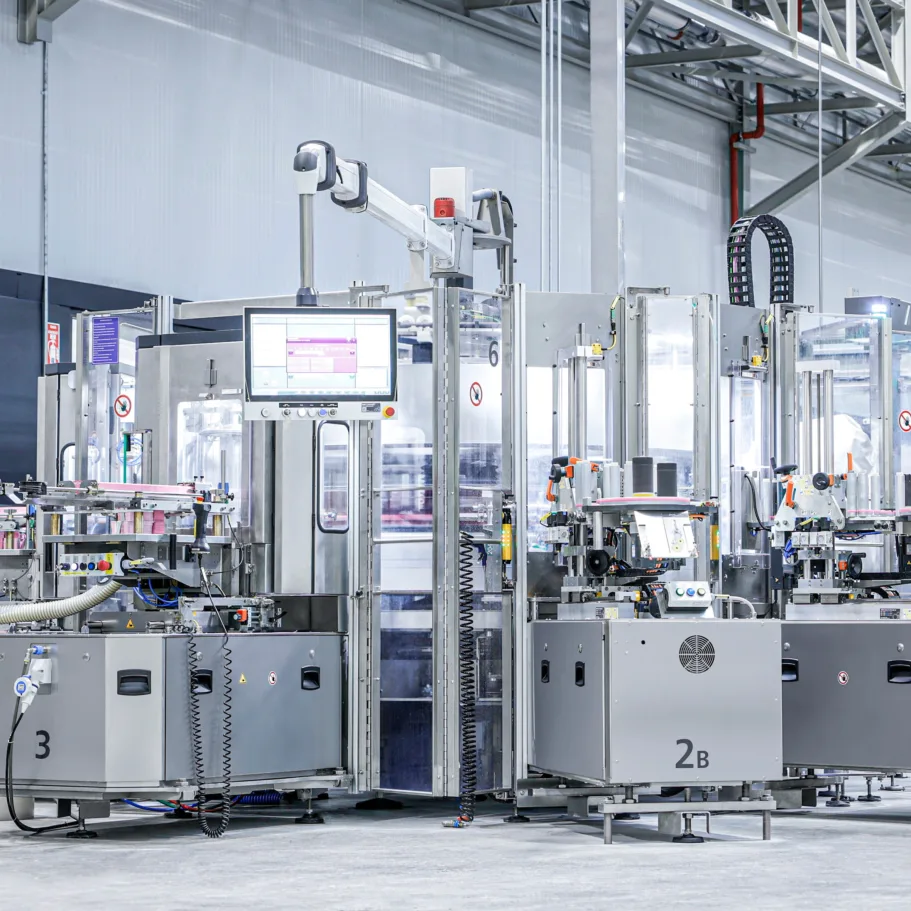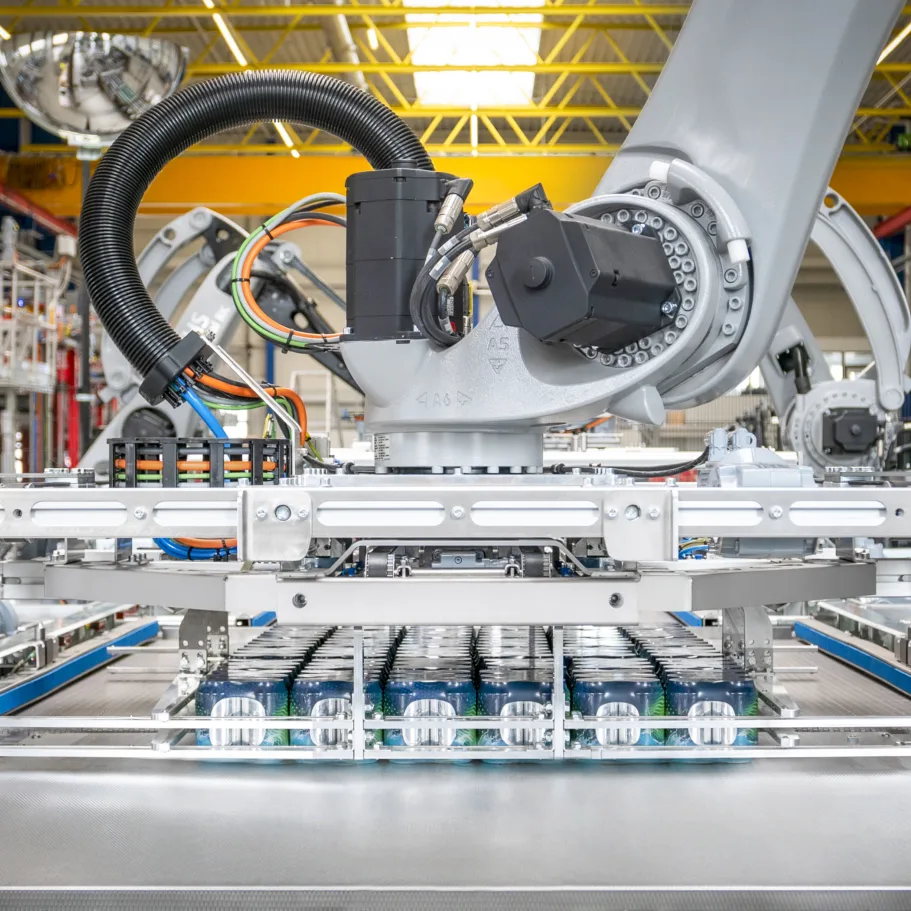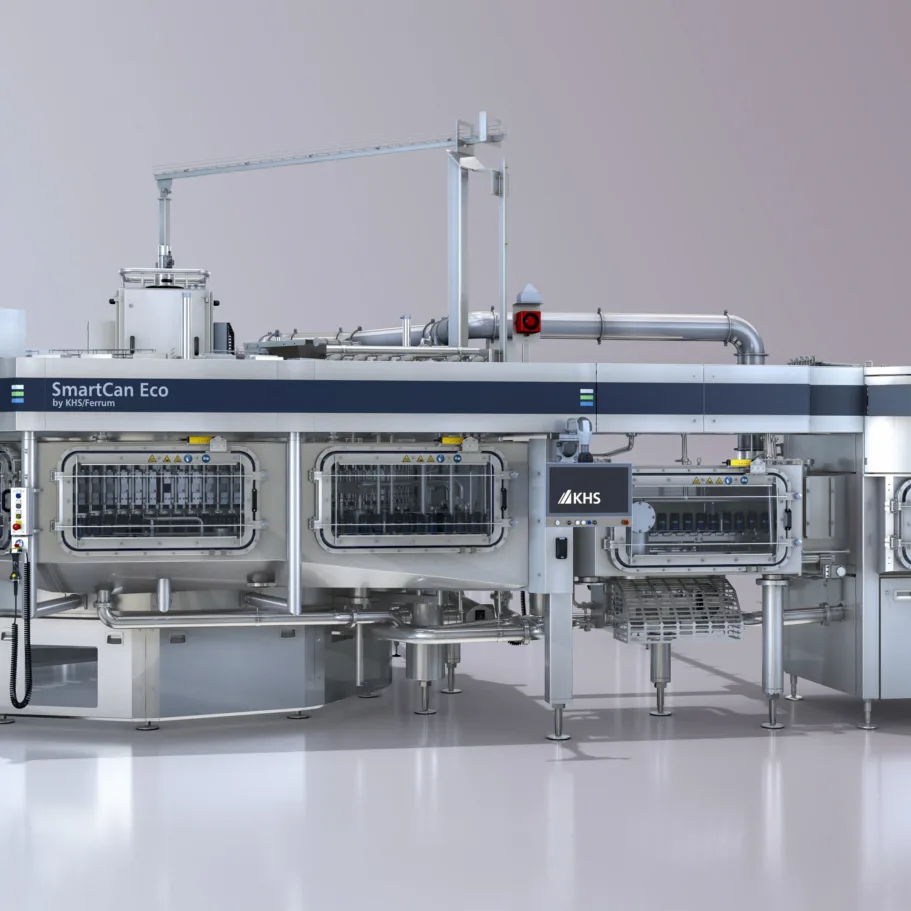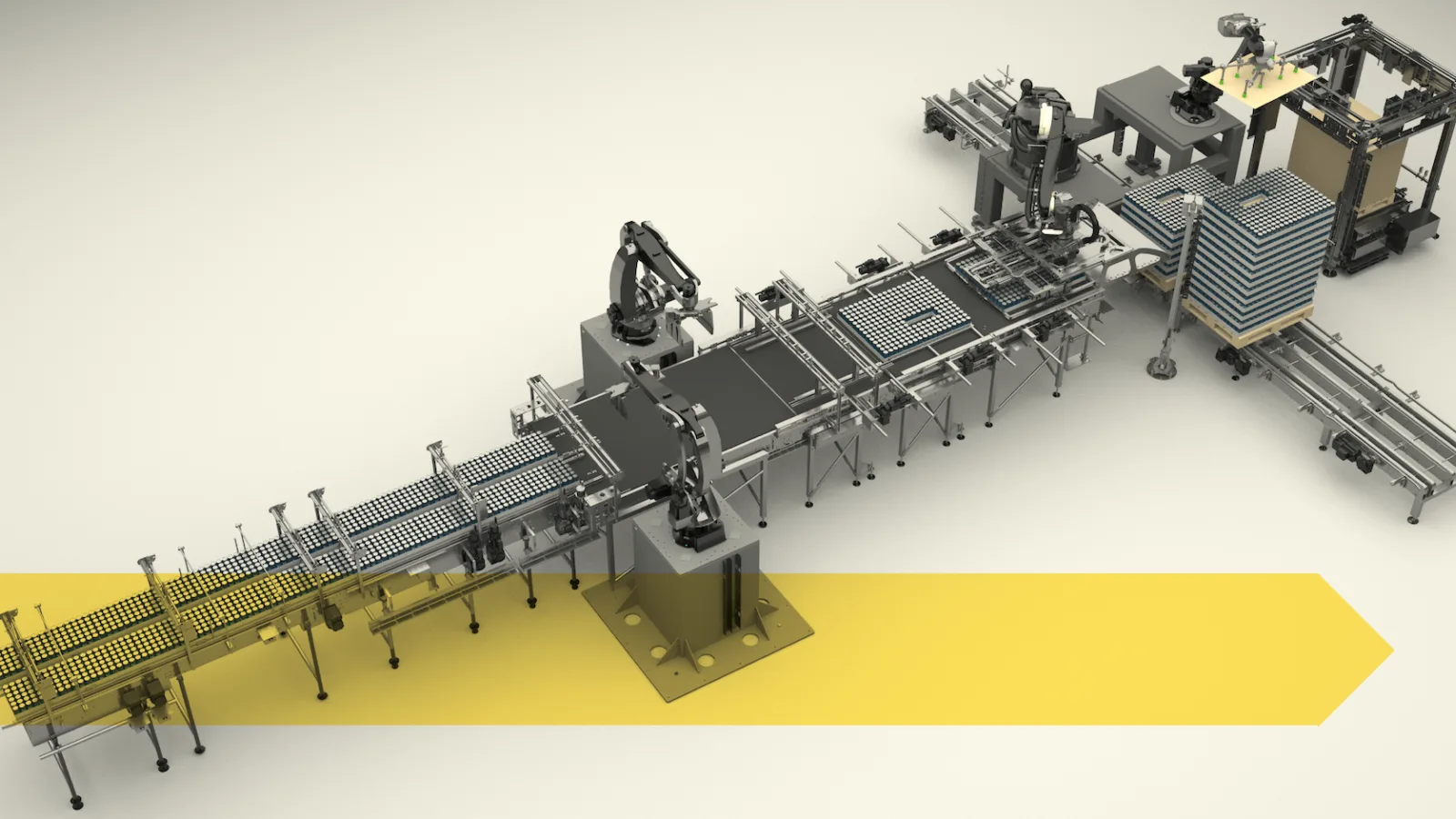
Full speed ahead
With the help of modern robots KHS has brought low-feed palletizers up to speed – whether they process cans, PET or glass. For beverage fillers this means easier operation, greater efficiency and higher availability.
The development of KHS’ new Innopal PLR high-performance palletizer was sparked by the idea of combining the benefits of low-feed machines with the capacities provided by palletizers with a high infeed. In this context, the chief question was how efficiency could be improved over conventional systems.
When palletizing with a low-level infeed, to date the cross conveyor that places the packs from the conveyor belt onto the stationary pallet gradually moved up from the initial feed height with each new layer positioned – and then back down again to pick up the next layer. If no further measures are taken, traversing these considerable distances limits capacity to about 360 layers per hour. Higher outputs can be achieved if the amount of time needed for pallet changeovers is reduced, for instance. This is the case with the KHS Innopal PB NF palletizer, to name one example, that can process up to 500 layers an hour.
Up until now beverage companies requiring an even higher processing rate had to opt for a palletizer with a high pack infeed, however, where the pallet travels and not the cross conveyor. At the start of layer placement this is at the height of the infeed – usually three meters above the shop floor. With each finished layer it slowly moves down. This vastly shortens the distances of travel and thus the cycle time, enabling capacities of up to 750 layers per hour, such as with the KHS Innopal PB HSS. Once the pallet’s full, it has to be discharged from the machine before a new pallet can be brought up to the level of the infeed.
»We can now optimize our robots for high speeds and integrate them into a market-oriented standard system.«
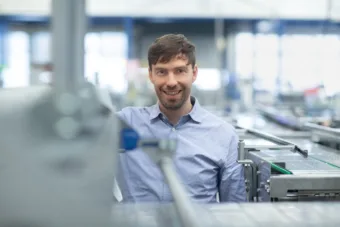
Palletizing product manager, KHS
Would you like to find out more about our high-performance Innopal PLR palletizer? Then visit khs.com for further information!
Robots the new standard
Palletizers with a high feed are becoming more and more unpopular on the market for a number of reasons, however. One of these is that they need two operating levels – one at the bottom for pallet conveying and one at the top for the pack conveyor. This calls for a platform accessed by steps with all the occupational health and safety risks this entails. When the operator is at the top of the system, he or she usually has no way of seeing what’s going on down below. There’s also the added difficulty of packs having to be brought up to the level of the infeed. A long elevator or spiral conveyor can be used to this end. Like the platform itself, both incur considerable costs and take quite a long time to install and commission.
“With this in mind, our customers are increasingly asking for palletizers with a low infeed to reduce their investment costs and increase safety levels,” says Christoph Wiesenack, palletizing product manager for KHS in Worms. Here, most competitors tend to optimize their conventional technology to increase outputs.
This includes using a second cross conveyor, for instance, to decouple the vertical and horizontal segments and thus shorten the wait time during pallet changeovers. With its new Innopal PLR high-performance palletizer KHS has consciously gone for a different approach, relying entirely on robotics. “To date robots were primarily used for special tasks that standard palletizers can’t manage efficiently,” Wiesenack explains. “They weren’t usually associated with high outputs.” KHS’ team of developers has now created a scenario whereby up to 625 layers an hour can be palletized – which amounts to a nominal capacity of 135,000 cans an hour maximum, depending on their diameter. “For this purpose, we first positioned all elements in the palletizing cell so that the robot has an excellent radius of movement. Secondly, we redefined the descriptions of movement to permit higher speeds. We’ve also coordinated these movements with a second robot that inserts layer pads.”
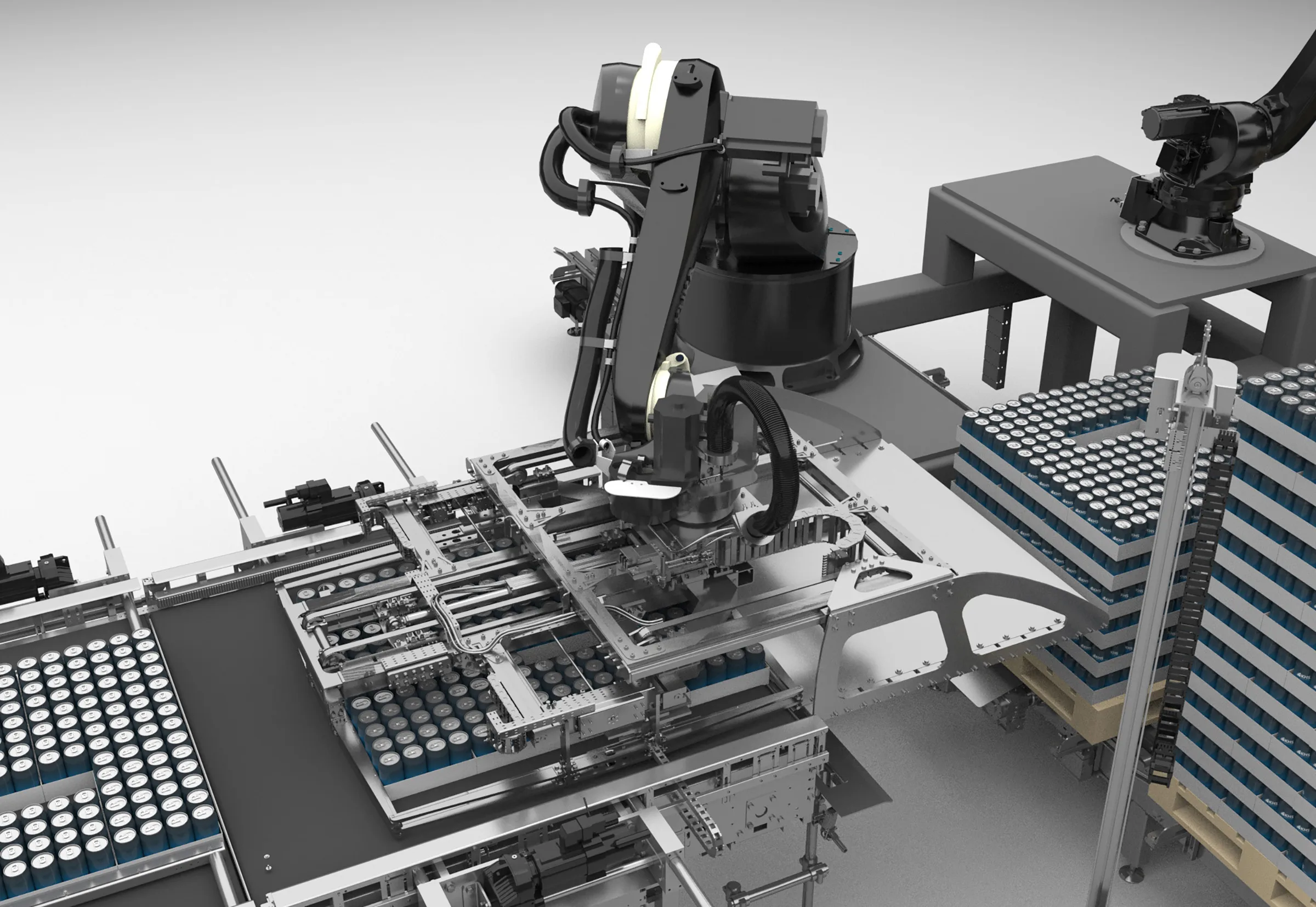
The robot head pushes the layer onto the palletizing plate from all four sides for top-quality layer patterns.
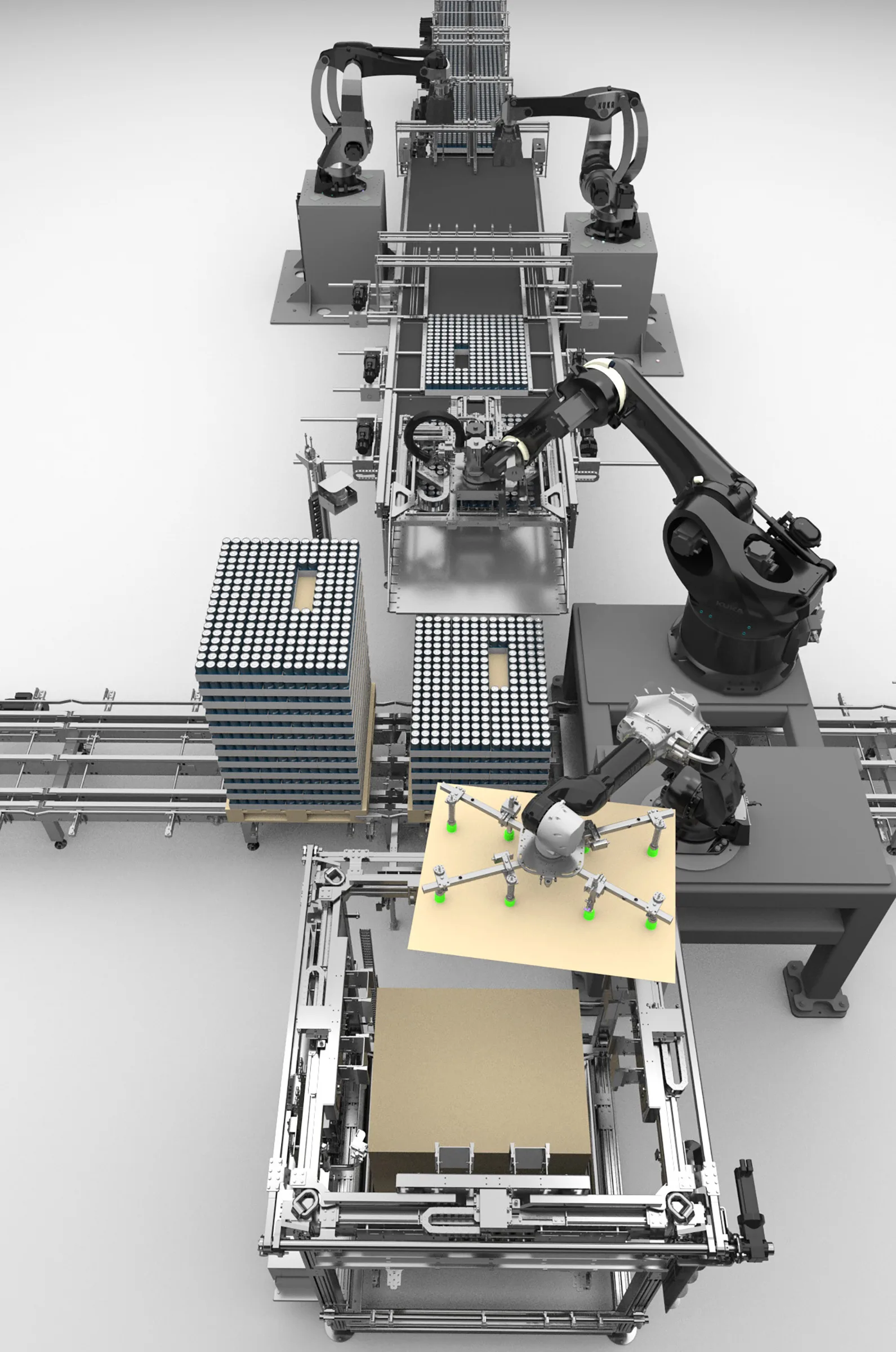
By traveling short, straight distances only, the layer pad robot (in the foreground) is faster and more flexible in its placement.
Focus on speed and efficiency
So that the Innopal PLR can operate on either a PET or glass line, at the end of the robot arm KHS has designed not just a designated head for cans but also heads for PET and glass bottles that can process up to 600 layers per hour. They are taller so that they can accommodate larger containers and heavier loads.
KHS’ general focus on speed and efficiency is not to the detriment of the range of formats that can be processed on the Innopal PLR, however. The palletizer is designed to cope with all standard sizes – from euro and half pallets to the industrial pallets most commonly used throughout the world. Formats are changed over by fully automatic adjustment of the centering systems that firmly enclose the layers and ensure that these don’t move during conveying or positioning and that they don’t lose their formation. “Compared to classic palletizers, where the layer is simply pushed from behind, this system enables faster acceleration and thus higher capacities” smiles Wiesenack.
Extremely robust
The biggest advantage of the robotic system lies in its operational reliability, believes the KHS expert. “During development we were able to fully concentrate on gentle picking up and setting down of the product layers using our new heads,” he emphasizes. The machinery is also extremely robust with little downtime and low maintenance costs. By doing away with superstructures on the table or large constructions on the palletizing machine, the operator now has a good view of the entire palletizing area. This means that the Innopal PLR can be easily operated by one person. Even the troubleshooting process has been improved: the new palletizer is of course designed so that it can be connected up to KHS’ remote diagnostics system ReDiS.
Wiesenack is proud to now also be using robots in the high-performance range. “In the past, these were normally used for customized systems in the low-capacity range for maximum flexibility. KHS can now demonstrate that we’re able to fully optimize our robots for high speeds and incorporate them in a standard setup that’s strongly geared towards the market.”
